Hair and Hairstyling
Hair Rental—You know it makes sense
These hair rental ads ran for about five years in British papers. So I assume the company must have done decent business.I've heard of wig rentals, but for some reason the idea of toupee rentals seems weirder.

Sunday London Mirror - Mar 11, 1973
Posted By: Alex - Tue Dec 06, 2022 -
Comments (2)
Category: Business, Headgear, 1970s, Hair and Hairstyling
Hair Coloring Calculator
Pity the poor inventor of the 1980s, who had a notion for something not supported by the clunky digital tech of that era. This elaborate device is today just a free app.Full patent here.
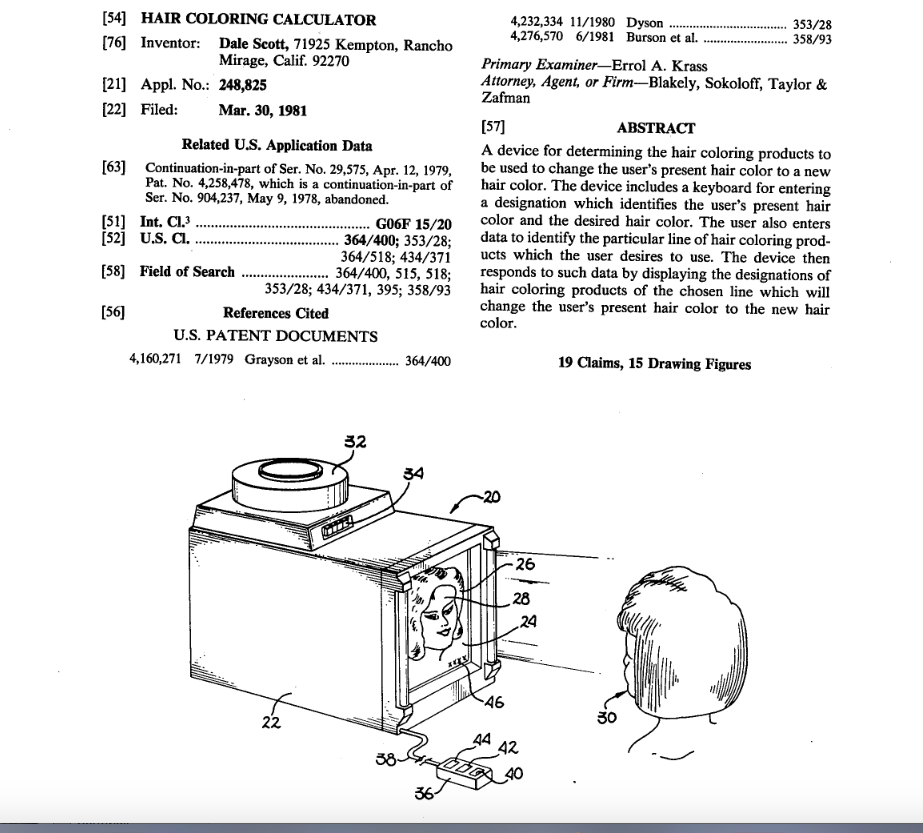
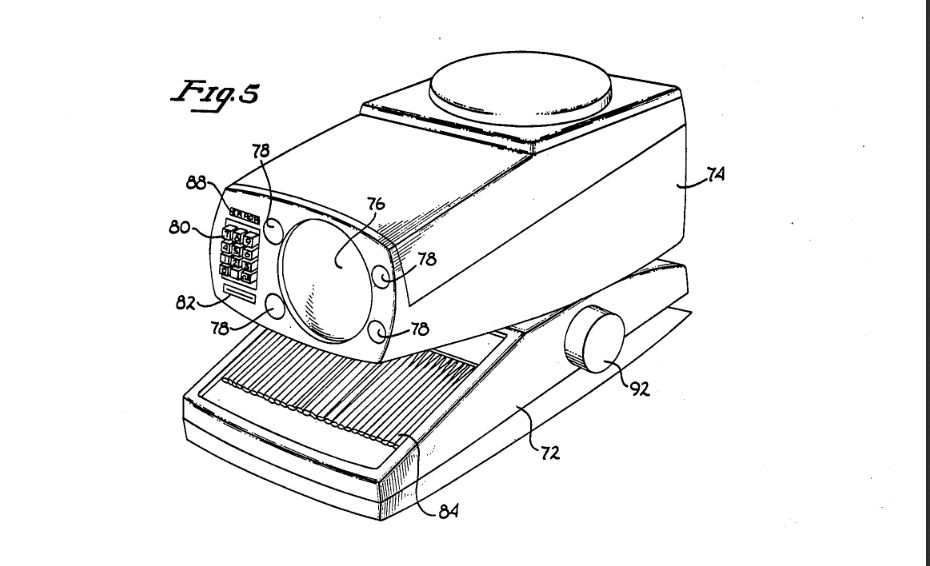
Posted By: Paul - Fri Nov 25, 2022 -
Comments (0)
Category: Inventions, Patents, 1980s, Hair and Hairstyling
Thanksgiving Hair Tonic Cocktail
In 1909, Friedrich Wilhelm Emil Müller of Chicago received a patent for a hair tonic that, so he claimed, would cause hair "to grow on bald spots of the head." All you had to do was thoroughly rub it into the scalp with the tips of the fingers several times a day.The tonic struck some at the patent office as sounding quite tasty. So it was served as an aperitif at the 1936 Thanksgiving-week banquet in Washington DC celebrating 100 years of the American patent system.


Tacoma News Tribune - Nov 24, 1936
Posted By: Alex - Thu Nov 24, 2022 -
Comments (2)
Category: Inebriation and Intoxicants, Patents, Thanksgiving, Hair and Hairstyling, Alcohol
Hair length and voting
In 1969, the Wyoming Senate approved an amendment to lower the voting age to 19, but added the condition that young men would only be able to vote if they had short hair conforming to military standards. No similar condition was imposed on young women.
Billings Gazette - Feb 8, 1969
Some more details from "Let us vote!": youth voting rights and the 26th amendment by Jennifer Frost:
Although Myers's amendment may have started as a joke, the Wyoming Senate initially passed it before finally removing it. "Young people in Wyoming were not laughing. They were embarrassed. They were shocked," wrote Philip White, the editor of the Branding Iron, the student newspaper at the University of Wyoming. Making appearance a qualification for suffrage was unconstitutional, and Myers knew it. Neither hair, clothing, nor skin color could be taken into consideration for determining voting rights, White explained. Young people wanted the vote. "But we will not stand to be judged by the length of our hair." In the end the controversy subsided, and the Vote 19 referendum would go before the state's electorate in November 1970.
Posted By: Alex - Sat Nov 05, 2022 -
Comments (0)
Category: Government, Civic Duties, 1960s, Hair and Hairstyling
Desairology
Noella Charest-Papagno coined the term 'desairology' to mean doing hairstyling and cosmetics for the deceased. She created the word by combining 'des' (for deceased), 'air' (for hair), and 'ology' (a branch of learning). She thought the term sounded better than 'necrocosmetologist,' which had previously been the job title for funeral hairdressers. Her term seems to have caught on within the profession. At least, it has a wikipedia page.In 1980, Papagno also authored the first book on hairdressing for the dead — Desairology: The Dressing of Decedent's Hair.
She created the somewhat bizarre video below around 2015. It's titled, "Dead lady speaks. Looks better now."
More info: JJ Publishing Group

Fort Lauderdale News - Apr 27, 1986
Posted By: Alex - Fri Jun 10, 2022 -
Comments (0)
Category: Death, Hair and Hairstyling
Redhead Cluster Phenomenon
Peter Watson, in his book Twins: An Investigation Into the Strange Coincidences in the Lives of Separated Twins, related the following story:This tendency of red-haired men to be seen in clusters is known as the "Redhead Cluster Phenomenon". I'm not sure if it applies to red-haired women as well.
More info about it can be found at the site RhCP, created by Toronto journalist Joe Clark.
Posted By: Alex - Thu Jun 02, 2022 -
Comments (3)
Category: Synchronicity and Coincidence, Hair and Hairstyling
Greasy Kid Stuff
Television commercials for Vitalis hair tonic during the 1950s and early 60s included the line, "Are you still using that greasy kid's stuff on your hair?In 1962, this inspired two young entrepreneurs to come out with a hair product called "Greasy Kid Stuff".


Charlotte Observer - Feb 15, 1963
It enjoyed brief popularity as a fad product, but within a year had disappeared from shelves.
But the phrase 'greasy kid stuff' also inspired both a song that became a Top 40 hit and (in the 1990s) a popular radio show.
More info: Ad Nauseam
Posted By: Alex - Sat May 28, 2022 -
Comments (0)
Category: Music, Advertising, 1960s, Hair and Hairstyling
Charles Davis, collector of elephant hairs
Charles Davis collected elephant hairs — in particular the long hairs that grow from their tails. By the time he was 83, in 1962, he had hairs from 357 different elephants.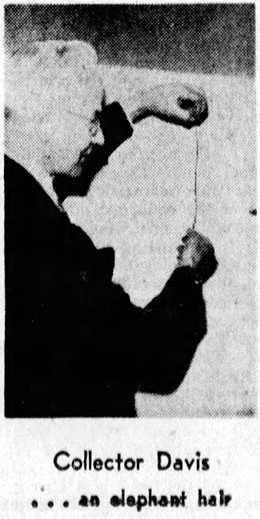
Cincinnati Enquirer - June 14, 1959
Details from a syndicated article by Ramon J. Geremia (Weirton Daily Times - Mar 24, 1962)
But the elephant hairs make up the bulk of the collection of elephantiana. The longest one is 13 inches, the shortest, plucked from a 200 pound baby elephant, is one and one-half inches long. They include colors ranging from black to white with a few red chin whiskers.
Most of them were plucked from elephant tails — some were cut from the more belligerent behemoths. Every zoo in the nation is represented, except the Bronx Zoo in New York...
Davis started his unusual hobby as an elephantphile in 1928. He asked a circus elephant trainer to suggest something he could collect from or about elephants and the trainer suggested hair. Davis, a retired optometrist, says his collection "took my mind off business."
Posted By: Alex - Fri May 20, 2022 -
Comments (0)
Category: Animals, Collectors, Hair and Hairstyling
The Unisphere Hairdo
Rival strippers with the same "unique" hairdo! I predict a catfight!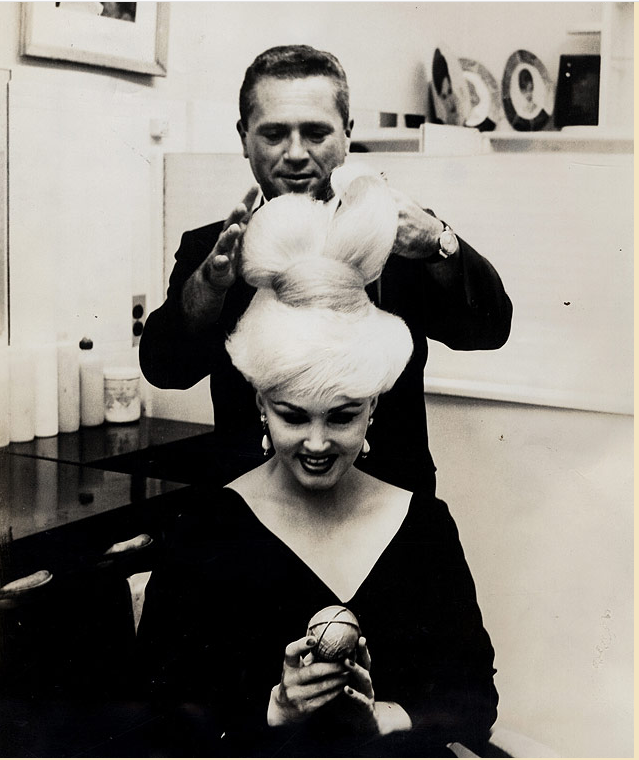
Stylist John Fonda finishes up the stripper Ecstasy's new look -- "The Unisphere Hairdo" -- inspired by the official symbol of the New York World's Fair of 1964.
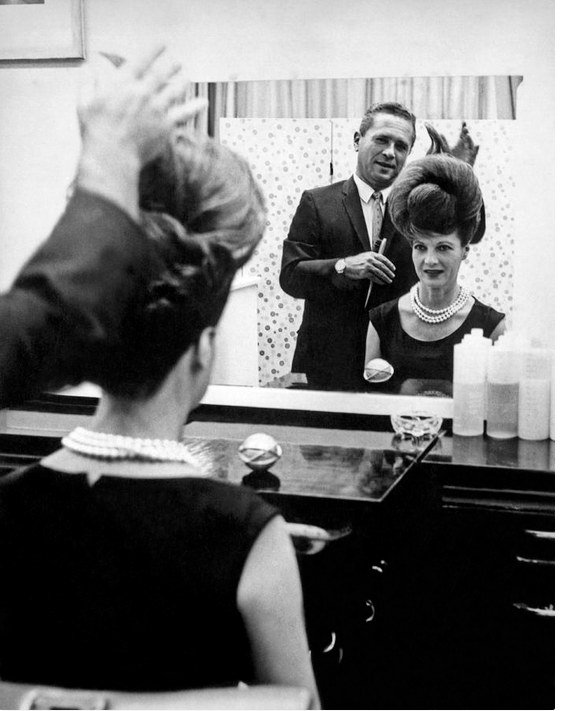
Ann Corio, star of "This Was Burlesque", watches in the mirror as stylist John Fonda puts the finishing touches on "The Unisphere Hairdo", inspired by the official symbol of the 1964 NY World's Fair.
Posted By: Paul - Fri Jan 28, 2022 -
Comments (0)
Category: Burlesque, Exotic Dancing, Stripping and Other Forms of Staged Nakedness, 1960s, Hair and Hairstyling
Anti-Blond Crusade
The Mean Girls of Apeldoorn:
Chicago Tribune - Feb 15, 1996
Posted By: Alex - Tue Jan 18, 2022 -
Comments (4)
Category: Antisocial Activities, 1990s, Hair and Hairstyling

| Who We Are |
|---|
| Alex Boese Alex is the creator and curator of the Museum of Hoaxes. He's also the author of various weird, non-fiction, science-themed books such as Elephants on Acid and Psychedelic Apes. Paul Di Filippo Paul has been paid to put weird ideas into fictional form for over thirty years, in his career as a noted science fiction writer. He has recently begun blogging on many curious topics with three fellow writers at The Inferior 4+1. Contact Us |




